Buick Enclave: Engine Compartment Fuse Block. Instrument Panel Fuse Block. Wheels and Tires
The underhood fuse block is located in the engine compartment, on the passenger
side of the vehicle. Lift the cover for access to the fuse/relay block. Notice: Spilling liquid on any electrical component on the vehicle may damage
it. Always keep the covers on any electrical component. To remove fuses, hold the end of the fuse between your thumb and index finger
and pull straight out. The vehicle may not be equipped with all of the fuses, relays, and features shown. The instrument panel fuse block is located under the instrument panel on the
passenger side of the vehicle. Pull down on the cover to access the fuse block. Fuse Side The vehicle may not be equipped with all of the fuses, relays, and features shown. Relay Side Tires Every new GM vehicle has high-quality tires made by a leading tire manufacturer. See the warranty manual for information regarding the tire warranty and where
to get service. For additional information refer to the tire manufacturer. There could be a blowout and a serious crash. See Vehicle Load Limits . ► Underinflated tires pose the same danger as overloaded tires. The resulting
crash could cause serious injury. Check all tires frequently to maintain the recommended pressure. Tire pressure
should be checked when the tires are cold.
► Improperly repaired tires can cause a crash. Only the dealer or an authorized
tire service center should repair, replace, dismount, and mount the tires. Excessive spinning may cause the tires to explode.Engine Compartment Fuse Block
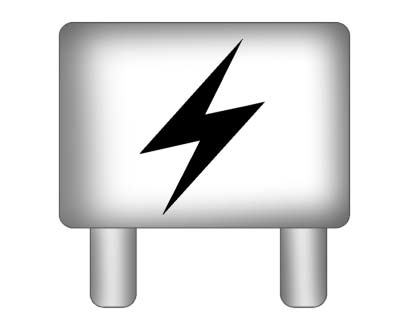
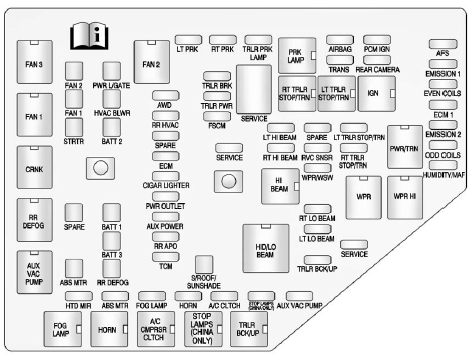
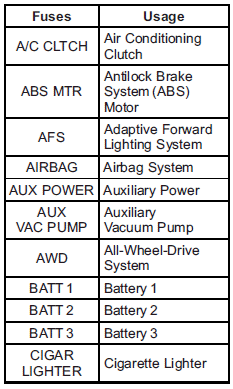
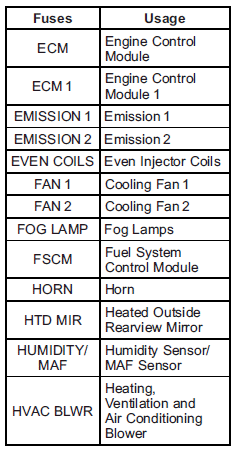

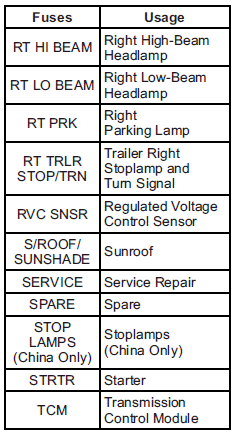
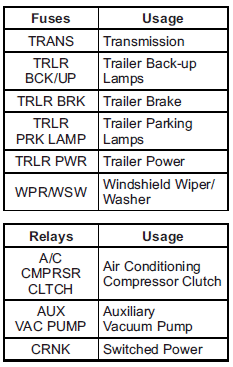
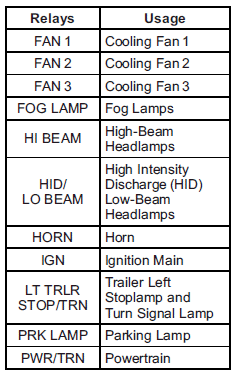

Instrument Panel Fuse Block

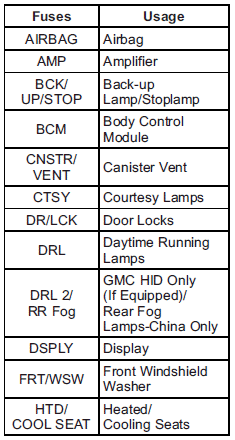
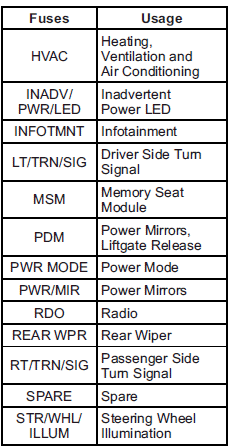


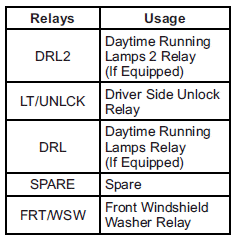
Wheels and Tires
 WARNING
WARNING
► Poorly maintained and improperly used tires are dangerous.
► Overloading the tires can cause overheating as a result of too much flexing.
► Replace any tires that have been damaged by impacts with potholes, curbs, etc.

